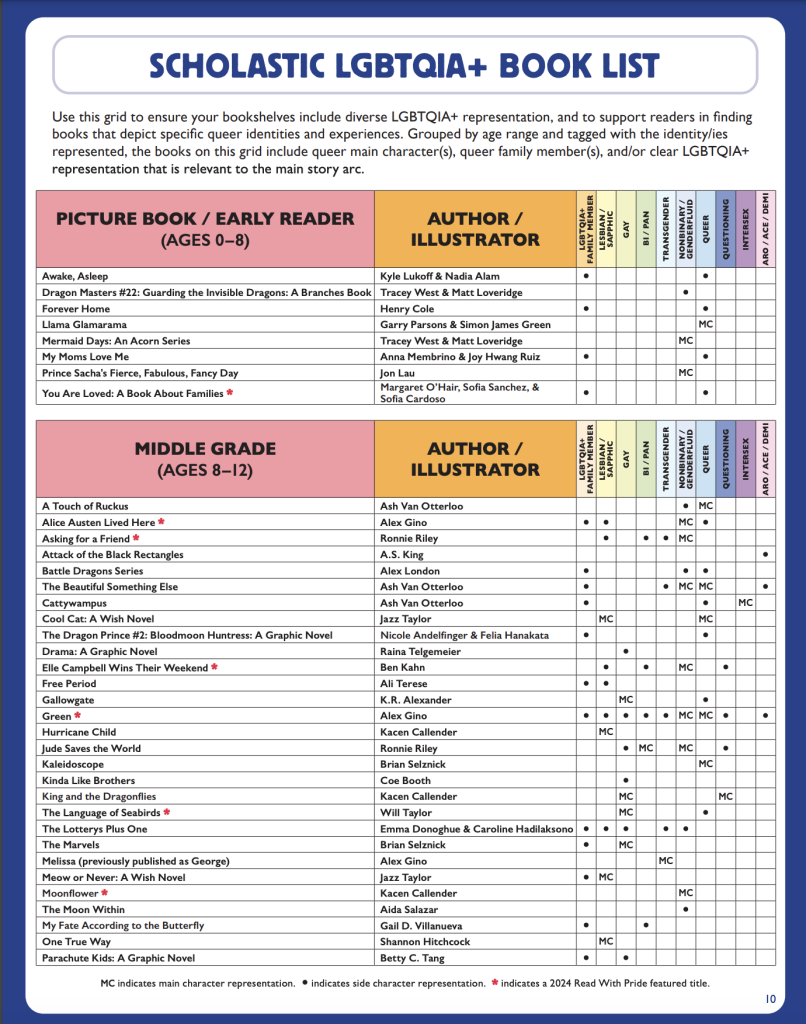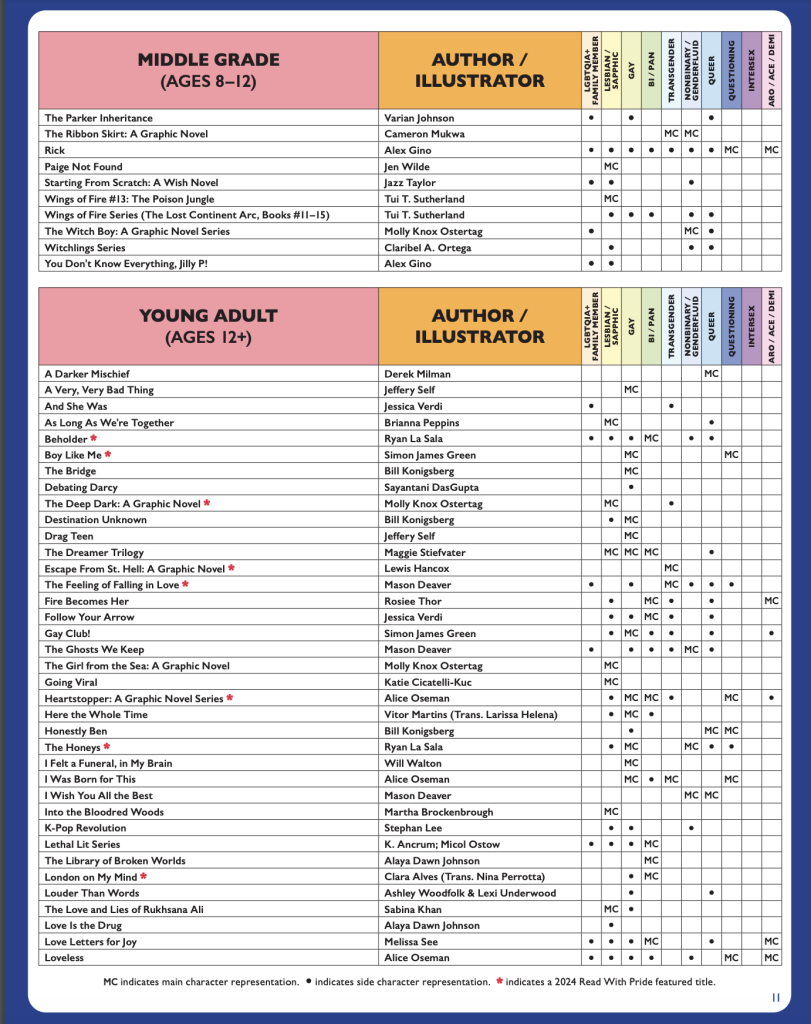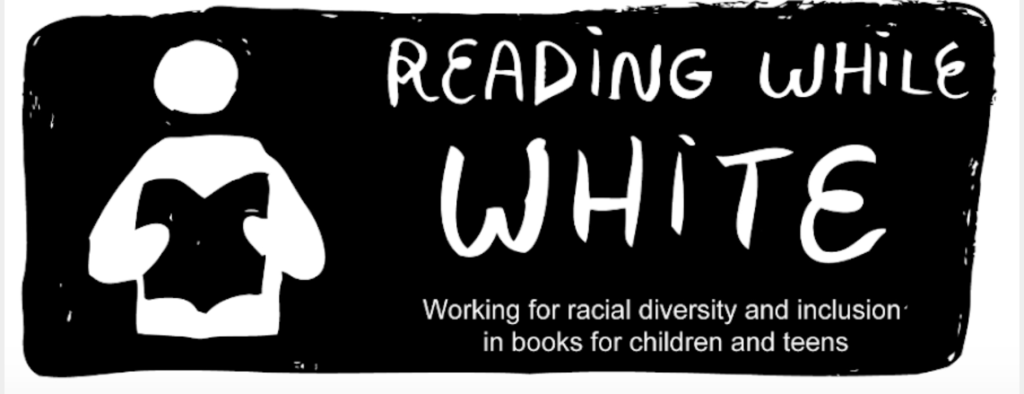
Please Follow us on Gab, Minds, Telegram, Rumble, Gettr, Truth Social, Twitter
Scholastic has updated its "Read with Pride" guide for 2024, thanks to Kazia Berkley-Cramer, a she/they social justice warrior.
The guide acknowledges the "immense, life-changing impact" on young people's lives by providing books that show "authentic representations" of queer people.
"Books and literature are never neutral; by engaging with queer literature for children and young adults, you are disrupting the status quo that implies being cisgender, heterosexual, and allosexual are the default. You are showing children an expanded way of thinking and being that validates all children and all people."
The guide draws on a long list of left-of-center organizations as its resources, including GLAAD, PFLAG, The National Center for Transgender Equality, the Southern Poverty Law Center's Learning for Justice, Everyday Feminism, and The Trevor Project, which has been accused of grooming youth.
It also offers a handy vocabulary list in case you need some help understanding the ever-changing list of terms used to describe gender, for instance.
Like "allocishet" which is a term that combines “allosexual/alloromantic,” “cisgender,” and “heterosexual/ heteroromantic” and is used "as shorthand to describe people whose gender and sexuality are privileged by society."
Or "two-spirit" which is "an umbrella term specifically for Native American/First Nations/Indigenous people who do not identify within the colonialist gender binary."
And of course a book list that includes queer titles for children ages "0-8" and plenty of other book recommendations that many parents would consider inappropriate.


The author of the guide, Kazia Berkley-Cramer, is a children’s librarian outside of Boston, Massachusetts who has served on the American Library Association’s Stonewall and Sibert book award committees and also writes reviews for Kirkus Reviews.
Berkley-Cramer is also part of a group that runs a racist blog called Reading While White.
The group is composed of "white library workers organizing to confront and dismantle racism in the field of children’s and young adult literature."

"As white people, we acknowledge the existence of systemic racism and white privilege as we take action in the work of advocating for anti-racist policies within our field and beyond. We are learning, and hold ourselves responsible for understanding how our whiteness impacts our perspectives and our behavior as we strive to advocate for this movement.
We know that we lack the expertise that BIPOC have on minoritized racial experiences. We resolve to listen to, learn from, and be accountable to BIPOC who are able and willing to speak about those experiences. We resolve to examine our own white racial experiences without expecting BIPOC to educate us."
Excerpt, Reading While White Mission Statement
Much like with the Scholastic guide, Berkley-Cramer's Reading While White blog has a glossary.
Here are a couple of definitions that were new to us.
Columbus (verb) - To take possession of, or credit for, “discovering” something that was already possessed or known by others.
White (adjective) - One of several specious racial classifications of human beings, “White” was created by slavers and colonialists in 17th-Century Virginia to replace terms like “Christian” and “Englishman”. The definition of White has changed and continues to change every time the empowered group fears it will soon be outnumbered by unempowered people; Irish, Italian, and Jewish identities are examples of identifiers that used to, but no longer, preclude one from being White.
The group further shares articles like 10 ways white people are more racist than they realize and Kimberlé Crenshaw's critical race theory lesson on "The urgency of intersectionality".
So, yeah, it seems a social justice warrior has written the Pride guide for Scholastic.
By the way, Scholastic is the world's largest publisher and distributor of children's books and a leading provider of literacy curriculum, professional services, and classroom magazines, and a producer of educational and children’s media.
Scholastic currently operates inside 115,000 schools, reaching 3.8 million educators, 54 million students, and 78 million parents/caregivers domestically.

